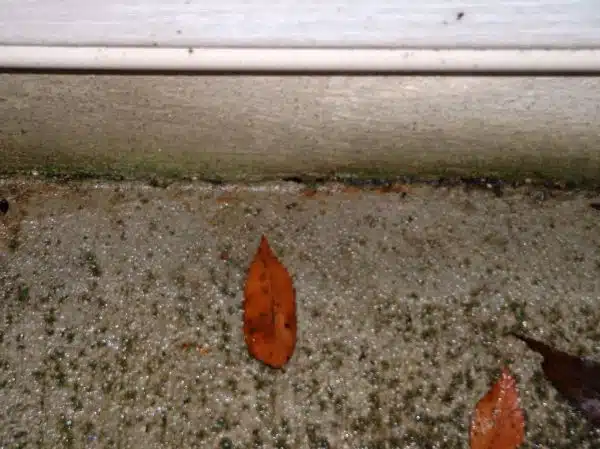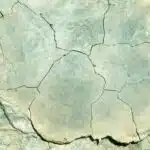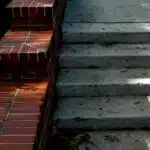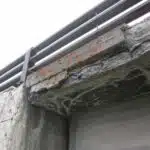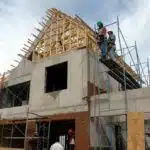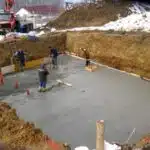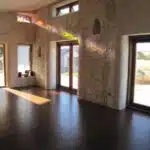Concrete patios are a popular choice for homeowners due to their durability and low maintenance. However, over time, cracks may appear in the surface of the patio due to weather conditions or natural wear and tear. These cracks not only detract from the appearance of the patio but can also lead to further damage if left unaddressed.
As a concrete repair specialist, I have encountered numerous cases where homeowners are unsure of how to repair cracks in their patio effectively. In this article, I will provide a step-by-step guide on how to repair cracks in a concrete patio, ensuring that your patio remains structurally sound and visually appealing for years to come. By following these simple steps, you can take pride in maintaining your property and serving others by providing an inviting outdoor space for them to enjoy.
Understanding The Causes Of Concrete Patio Cracks
Concrete patios are a beautiful addition to any outdoor living space. However, over time, they can develop unsightly cracks that detract from their beauty and functionality. Understanding the causes of concrete patio cracks is essential for preventing them from occurring in the first place.
One of the primary causes of concrete patio cracks is shrinkage. As concrete dries and hardens, it naturally shrinks. If not properly cured or reinforced with steel rebar, this shrinkage can cause cracks in the surface of the patio. Another common cause of concrete patio cracks is settlement. This occurs when the soil beneath the patio compresses or shifts, causing the concrete to sink and crack.
Prevention is key when it comes to avoiding concrete patio cracks. Proper installation techniques, such as adding reinforcement or using control joints, can help prevent shrinkage and settlement-related cracking. Additionally, regular maintenance and sealing can help protect your patio from water damage and freeze-thaw cycles that can weaken its surface over time. By taking these preventative measures, you can reduce your risk of developing unsightly cracks in your concrete patio.
Assessing the severity of damage caused by concrete patio cracks is an essential step towards effective repair.
Assessing The Severity Of The Damage
- Proper identification of the cause of the damage is necessary in order to properly estimate the extent of the repair needed.
- A thorough inspection should be performed to ensure that all contributing factors are identified.
- The extent of the damage can then be determined by assessing the depth, width and area of the cracks.
- Upon completion of the assessment, a repair plan can be developed to address the severity of the damage.
Identifying The Cause
To properly assess the severity of damage on a concrete patio, it is essential to identify the cause of the cracks. One of the most common causes of cracks in concrete is due to shrinkage. This occurs when there is not enough water in the mixture or when the concrete has been exposed to high temperatures. Another cause of cracks in concrete patios is due to freeze-thaw cycles during winter months. When water penetrates into the pores and crevices of concrete and freezes, it expands, causing stress and eventually leading to cracks.
Prevention measures are crucial for mitigating future damage on a concrete patio. One effective method is to avoid using too much water during mixing as this can lead to shrinkage cracking. Additionally, ensure that adequate curing time is allocated after installation before any heavy traffic or objects are placed on the surface. To prevent freeze-thaw cracking, apply a sealant or coating that resists moisture penetration and reduce exposure to de-icing salts.
Identifying the cause of cracks in a concrete patio is crucial for determining appropriate repair methods. By understanding what caused the damage and implementing prevention measures, homeowners can extend their patio’s lifespan while preventing further costly repair expenses down the road.
Estimating The Extent
Assessing the severity of damage on a concrete patio is an essential step to determine the appropriate repair method. Once the cause of cracks in a concrete surface has been identified, it’s time to estimate the extent of the damage. This process typically involves assessing the depth and width of cracks, as well as any potential structural damage caused by underlying issues.
To assess the depth of cracks in a concrete patio, specialists use a variety of tools such as probes and moisture meters. These tools allow them to determine if there is any underlying damage that isn’t visible on the surface. It’s important to note that just because a crack appears small on the surface doesn’t mean there isn’t significant structural damage beneath it. By accurately assessing the depth and width of cracks, specialists can choose an appropriate repair method that will effectively address all aspects of the issue.
Choosing an appropriate repair method for damaged concrete patios requires careful consideration of several factors, including cost, durability, and aesthetic appeal. For smaller cracks, simple patching or sealing may be sufficient. However, more extensive damage may require full removal and replacement of sections or even entire patios. In some cases, decorative overlays or coatings may be used to improve appearance while providing added protection against future damage. Ultimately, choosing an effective repair method depends on accurate assessment and careful consideration of all relevant factors.
Gathering The Necessary Tools And Materials
After assessing the severity of the damage on your concrete patio, you need to gather essential tools and the best materials for repairing cracks. Having the right tools and materials is crucial in ensuring a successful repair job. Some of the essential tools that you will need include a chisel, hammer, wire brush, trowel, and gloves. You may also require a grinder if you have large cracks that need to be repaired.
When it comes to choosing the best materials for repairing cracks on a concrete patio, there are several options available. One option is crack filler which is ideal for small or hairline cracks. Another option is epoxy which is perfect for larger cracks or those that are deeper than ½ inch. You can also use concrete resurfacer if your patio has multiple small cracks or if it has surface damage.
It is important to note that safety precautions should be taken before beginning any repair work on your concrete patio. Wear protective gear such as gloves, safety glasses, and a dust mask when working with concrete. Ensure that the area around your patio is clear of any obstacles that could cause accidents. Taking safety measures will help prevent injuries while carrying out repair work on your patio.
Safety Precautions To Take Before Beginning
Despite the excitement to start repairing your concrete patio, it is essential to prioritize safety. One of the most critical safety precautions to take before beginning any repair work is ensuring proper ventilation. Concrete repair products often release toxic fumes that can cause respiratory problems when inhaled excessively. Therefore, it’s crucial to open windows and doors or use exhaust fans when working on concrete repairs.
Additionally, wearing protective gear is necessary when handling concrete repair products. You need to protect yourself from chemical exposure and physical harm. Protective gear includes gloves, eye goggles, face masks, and long-sleeved shirts/pants. Wearing these items lessens the risk of inhaling dangerous chemicals or getting exposed to harmful substances that may cause skin irritation.
Lastly, avoid smoking near the repair area because some of the chemicals used in concrete repair are flammable. Also, ensure that children and pets stay away from the workspace for their safety. Remember that taking precautionary measures ensures a safe environment for you and anyone else around you while doing repairs.
Now that we’ve highlighted the importance of safety precautions let’s move on to cleaning up the cracked area before proceeding with any repairs.
Cleaning The Cracked Area
Preparing the area for concrete repair requires the removal of any debris and dirt, as well as applying an etching solution to the concrete surface.
Cleaning the crack involves using a wire brush to remove loose particles, followed by vacuuming out the crack with a shop vacuum.
Patching the crack requires filling the crack with a concrete patch product, followed by troweling the patch to a smooth finish.
For further crack repair, a bonding agent should be applied to the crack prior to filling.
After the patching material begins to set, a curing compound should be applied to the patched area to prevent moisture loss.
The surface should then be sealed with a sealant to protect the patched area from future damage.
Preparing The Area
As a concrete repair specialist, preparing the area is an essential step in repairing cracks in a concrete patio. Before starting any repairs, it is crucial to ensure that the area is clear of any debris or loose material. This can be done using a stiff-bristled broom, a vacuum cleaner, or compressed air. Additionally, it is important to remove any plants or weeds that may have grown in the cracked area.
Once the area is clear of debris and plant growth, it’s time to assess the extent of damage and its cause. This will help determine the necessary tools needed for proper repair. For instance, if the crack is caused by soil settlement, then additional preparation may be needed to address this issue before repairing the crack itself. In such cases, heavy equipment like compactors or soil stabilizers may be required.
To prevent further damage and ensure proper adhesion of the repair materials, it’s important to clean the cracked area thoroughly using specialized cleaners such as acid wash or surface etchers. These cleaners are designed to remove dirt and stains from concrete surfaces without causing damage. However, it’s critical to follow all manufacturer instructions and safety guidelines when using these chemicals. By following these tips and using appropriate tools for preparing the area, you can ensure successful crack repair on your concrete patio.
Cleaning The Crack
After clearing the area of debris and assessing the extent of damage, the next step in repairing a cracked concrete patio is cleaning the crack. This process involves using a wire brush, recommended cleaners, pressure washer, or chisel to remove any loose material or contaminants from the crack. This helps ensure that the repair materials will properly adhere to the surface.
In addition to cleaning out the crack itself, it’s also important to fill it with a backing material such as foam backer rod or sand. This helps provide additional support for the repair material and prevent further cracking. Once this is done, you can proceed with filling in the crack using an appropriate patching compound.
When choosing a cleaning agent for your cracked concrete patio, it’s important to use only recommended cleaners that are safe for use on concrete surfaces. Acid wash or surface etchers may be effective at removing dirt and stains but should be used with caution due to their corrosive nature. By following these guidelines and properly preparing the area, you can ensure a successful repair that will help restore your concrete patio back to its original condition.
Patching The Crack
After thoroughly cleaning the cracked area, the next step in repairing a concrete patio is to patch the crack. This involves choosing an appropriate patching compound and filling in the crack to restore its structural integrity and prevent further damage. It’s important to select a material that not only matches the color of the existing concrete but also provides sufficient strength and durability.
When it comes to selecting a patching compound, there are various options available, including epoxy-based compounds, latex-based compounds, and cementitious compounds. Each type has its own unique set of advantages and disadvantages, depending on factors such as the size and location of the crack. Color matching is also an important consideration when selecting a patching compound. Some manufacturers offer tintable products or custom color-matching services to ensure a seamless repair.
In addition to traditional patching materials, there are alternative filling materials that can be used for certain types of cracks. For example, hairline cracks may be filled with a clear epoxy or acrylic sealer that allows light to pass through while still providing structural support. Overall, selecting an appropriate patching material is crucial for achieving a successful repair that restores both the function and appearance of your concrete patio.
Applying A Bonding Agent
The next step in repairing cracks in a concrete patio involves the application of a bonding agent. A bonding agent is an adhesive substance that is used to bond new concrete to old concrete, ensuring that they stick together and create a strong bond. There are two types of bonding agents available: epoxy-based and acrylic-based.
Epoxy-based bonding agents provide the strongest bond and are ideal for large cracks or areas where heavy traffic is expected. These types of bonding agents are typically more expensive than acrylic-based ones but offer better durability and long-term performance. Acrylic-based bonding agents, on the other hand, are more affordable and easier to apply. They are best suited for small cracks or areas with light to moderate traffic.
Using a bonding agent has many benefits when repairing cracks in a concrete patio. It helps to improve the adhesion between the old concrete and the new patching material, preventing it from separating over time. Additionally, it strengthens the repair by creating a chemical bond between the two surfaces. This makes it less likely for water to penetrate through, which can cause further damage to the structure.
To apply a bonding agent, start by cleaning any debris or loose particles from the crack using a wire brush or vacuum cleaner. Then, follow these steps:
- Mix your chosen type of bonding agent according to manufacturer instructions.
- Apply a thin layer of bonding agent onto the crack using a paintbrush or roller.
- Wait for the bonding agent to dry before adding your concrete patching mix.
With your newly applied bonding agent in place, you’re now ready for the next step: preparing your concrete patching mix!
Preparing The Concrete Patching Mix
Gathering Materials: To prepare the patching mix, one will need to acquire the necessary tools and materials such as a concrete patching compound, a trowel, a drill, and a concrete mixer.
Mixing the Patching Material: The mixing of the patching material should be carried out according to the manufacturer’s instructions to ensure a proper bond between the old and new concrete.
Gathering Materials: It is also important to gather the appropriate safety gear such as gloves and safety glasses.
Mixing the Patching Material: The patching material should be mixed with water to create a paste-like consistency before being applied to the concrete surface.
Gathering Materials
Upon examining your cracked concrete patio, you have determined that it is time for repairs. The first step in the process is gathering materials for preparing the concrete patching mix. To repair cracks in a concrete patio, you will need several essential tools and materials.
The materials needed to prepare the concrete patching mix include Portland cement, sand, and water. You will also need a trowel for spreading the mixture and a putty knife for smoothing it over the cracks. Depending on the size of your patio, you may need to purchase more or less of each material. A cost estimation can help you determine how much of each product to buy and how much money to budget for this project.
Cost estimation for repairing cracks in a concrete patio varies depending on the size of your patio and the amount of damage present. On average, homeowners spend between $300 and $500 on materials and labor for this task. However, if you plan to tackle this project yourself, then you can expect to pay significantly less since you will not have to pay for labor costs. By gathering all necessary materials beforehand and estimating costs accurately, you can ensure that your repair job goes smoothly without any surprises along the way.
Mixing The Patching Material
Once you have gathered all the materials needed to prepare the concrete patching mix, it is time to start mixing. Mixing techniques and patching material types are essential considerations for achieving a smooth and durable repair job. The first step is to wear protective gloves and a dust mask before beginning the mixing process.
The mixing process should be done on a clean surface using a sturdy container such as a wheelbarrow or large bucket. Begin by adding the Portland cement and sand in equal parts, followed by water. Mix thoroughly until you achieve a consistent texture with no lumps or dry spots. It is important to note that different patching material types may require different mixing ratios, so be sure to check the manufacturer’s instructions before starting.
To ensure that your patching material is of good quality, it must be mixed properly. The easiest way to determine if your mixture has been mixed enough is by checking its consistency – it should be thick enough to hold its shape but still spreadable. Once you have achieved this consistency, use a trowel to apply the mixture over the crack and smooth it out with a putty knife. Repeat this process until all cracks are filled, and wait for 24 hours before walking on or applying any weight on the repaired area.
Filling The Cracks With The Patching Mix
After preparing the concrete patching mix, it’s time to fill the cracks in your patio. But before that, let me remind you of one essential step – color matching. Yes, you don’t want to end up with a patch that looks entirely different from the rest of your patio. The best way to do this is by taking a sample of your patio’s surface and matching it with a concrete dye or stain. This way, you’ll ensure that the patch blends seamlessly with the rest of the patio.
Now that you have your color-matched patching mix ready, it’s time to apply it to the cracks. Start by filling up each crack with the mixture until it is level with the surface. Don’t worry about overfilling as you can always sand down any excess once it dries. Once done, leave it overnight or for at least 24 hours to cure.
The final step is applying finishing touches by smoothing and leveling the surface. You can use a trowel or float for this purpose, depending on how large an area you’re working on. Make sure to work quickly but carefully because once the mixture starts drying, it becomes difficult to manipulate. Smoothing out any bumps or ridges will ensure that your patched area looks even and professional-looking. And voila! Your concrete patio now looks as good as new!
Smoothing And Leveling The Surface
Techniques for smoothing the surface of a concrete patio are critical to ensuring that the repair is visually appealing and functional. One technique typically used by professionals is grinding the surface with a coarse wheel to remove any high spots or ridges. This process helps create a smooth, level surface that can be easily patched. Additionally, using a hand grinder can help smooth out any uneven areas.
Another option for smoothing the surface is using self-leveling compound. This material can be poured onto the affected area and will self-level to create a flat, even surface. However, it’s important to note that self-leveling compounds should only be used on small areas due to their limited coverage area.
Tips for leveling the surface include using a straight edge to identify low spots or depressions in the concrete. Once you have identified these areas, you can fill them in with patching mix or other suitable materials until they are level with the surrounding concrete.
- Consider hiring a professional if you’re uncomfortable working with concrete.
- Wear safety gear such as goggles and gloves when repairing your patio.
- Take time to properly clean and prepare the area before beginning repairs.
- Be patient during the curing process, as rushing it can lead to further damage.
- Use high-quality materials for optimal results.
Incorporating these techniques for smoothing and tips for leveling your concrete patio will ensure that your repair project is successful and long-lasting. Once you’ve completed these steps, you’ll be ready to move on to allowing the patching mix to cure properly before enjoying your newly repaired patio once again.
Allowing The Patching Mix To Cure
As a concrete repair specialist, I understand the importance of proper curing when it comes to repairing cracks in a concrete patio. Allowing the patching mix to cure properly is crucial for ensuring durability and longevity of the repaired area.
Tips for durability include avoiding heavy traffic or placing furniture on the repaired area for at least 24 hours after application. Additionally, keeping the area moist by lightly misting it with water can help prevent cracking during the curing process.
Proper curing involves allowing the patching mix to dry completely without interference. This can take anywhere from a few days to a week depending on weather conditions and humidity levels. It is important to be patient during this process as rushing it can lead to further damage or weakening of the repair.
Sanding And Sealing The Repaired Area
Sanding is necessary for the preparation of the concrete surface prior to sealing. Patching and filling cracks should be done prior to cleaning and caulking. Priming the area before applying sealer is essential in order to ensure proper adhesion. Leveling should be done before sanding the edges and sealing the edges to finish the repair process.
Sanding
When it comes to repairing cracks in a concrete patio, sanding is an essential step in the process of restoring the surface to its former glory. But before you start sanding, it’s important to choose the right type of sandpaper for the job. There are several types of sandpaper on the market, each with its own unique properties and uses.
The first thing you need to consider when selecting sandpaper is grit size. The higher the number, the finer the grit. For most concrete repair projects, a medium-grit sandpaper (around 80-120 grit) will be sufficient. However, if you’re dealing with deep or stubborn cracks, you may want to start with a coarse-grit paper (around 40-60 grit) and work your way up to a finer grit as needed.
Once you’ve chosen the appropriate sandpaper, it’s time to start sanding. One technique that can be particularly effective for larger cracks is to use a grinder or sander with a diamond blade attachment. This will allow you to quickly remove any rough or uneven areas from the surface of the concrete. For smaller cracks, hand-sanding with a block of wood wrapped in sandpaper can be an effective technique. Whatever method you choose, be sure to wear protective gear such as goggles and gloves to prevent injury while working.
Sealing
When it comes to repairing concrete patios, sanding is an important step in the restoration process. However, sanding alone may not be enough to ensure the longevity of your repaired patio. This is where sealing comes in. Sealing the repaired area can provide additional protection against weathering and other forms of damage, ultimately extending the life of your patio.
One of the main benefits of sealing concrete is that it helps to prevent water from seeping into and damaging the surface. Water can cause cracking, spalling, and other types of damage to concrete over time. By applying a sealer, you create a barrier that helps keep moisture out and prevents these types of issues from occurring. In addition to protecting against water damage, sealers can also help protect against staining from spills or other substances.
There are several types of sealers available for use on concrete surfaces. Some common options include acrylic sealers, epoxy sealers, and penetrating sealers. Acrylic sealers are typically easy to apply and provide a glossy finish that enhances the appearance of concrete surfaces. Epoxy sealers are more durable than acrylic sealers and provide better protection against stains and other forms of damage. Penetrating sealers work by penetrating deep into the pores of the concrete surface, creating a protective barrier that helps prevent moisture intrusion and other forms of damage. Ultimately, the type of sealer you choose will depend on your specific needs and preferences as well as the condition of your patio surface.
Preventing Future Cracks In Your Concrete Patio
After sanding down the repaired area and applying a sealant, it is important to take preventative measures to avoid future cracks in your concrete patio. Using sealants can help protect your patio from environmental factors that contribute to cracking, such as water damage and UV rays. Proper drainage is also essential in preventing cracks, as excess water can seep into the concrete and cause it to expand and contract, leading to cracks.
To ensure proper drainage on your patio, make sure that any nearby gutters or downspouts are directing water away from the area. Additionally, consider adding a slope to your patio so that water runs off instead of pooling on the surface. Another option is to install a French drain system with gravel and perforated pipes underneath your patio to redirect excess water away from the concrete.
By taking these preventative measures, you can minimize the risk of future cracks in your concrete patio. However, it is still important to regularly inspect and maintain your patio’s appearance. This includes removing any debris or stains promptly, avoiding using harsh chemicals on the surface, and resealing the concrete every few years. By doing so, you can extend the lifespan of your patio while keeping it looking its best for years to come.
Tips For Maintaining Your Patio’s Appearance
Did you know that maintaining the appearance of your patio not only improves its aesthetic value but also increases your property’s resale value by up to 10%? With proper care, a concrete patio can last for decades and withstand harsh weather conditions. Regular cleaning and sealing are essential to maintain its appearance and longevity.
DIY cleaning and sealing techniques are cost-effective ways to maintain your patio’s appearance. A mixture of warm water and mild soap is all you need to clean it thoroughly. Avoid using harsh chemicals as they can damage the surface. After cleaning, apply a sealant to protect the concrete from moisture, dirt, and stains. Sealing should be done every two years or whenever needed.
Using color is an excellent way to enhance your patio’s appearance. Coloring options include integral coloring, which adds pigment during mixing, or staining with acid or water-based stains. Integrally colored concrete lasts longer than stained concrete because the color is mixed throughout the entire slab. Staining provides more design possibilities, such as creating patterns or faux finishes.
Transition: While maintaining your patio’s appearance is essential, repairing cracks incorrectly could do more harm than good. In the next section, we will discuss common mistakes to avoid when repairing concrete.
Common Mistakes To Avoid When Repairing Concrete
To maintain your patio’s appearance, regular cleaning and sealing is crucial. However, sometimes cracks may still appear. In this case, it is important to address the issue promptly to avoid further damage and safety hazards. Quick fixes can be tempting, but they should be avoided as they often only provide temporary solutions.
One common mistake in repairing concrete is not properly preparing the surface before applying a patching compound. Neglecting to clean the crack thoroughly and remove any loose debris will prevent the patching material from adhering properly. Additionally, failing to fill the entire depth of the crack will cause water to seep in and expand when frozen, causing more damage.
Another mistake is using an improper patching material. It may seem like a good idea to use a quick-drying or easy-to-apply product, but it may not have the necessary strength or durability for long-term use. Using a low-quality material will only lead to having to redo the repair sooner than expected.
In conclusion, avoiding mistakes when repairing cracks in your concrete patio will ensure that the repair lasts longer and prevents further damage. Quick fixes should be avoided as they often only provide temporary solutions that do not address the underlying issue. If you are unsure about how to properly repair your patio or if there are extensive damages, it may be best to call in a professional concrete repair service for assistance.
When To Call In A Professional Concrete Repair Service
Are you tired of dealing with the cracks in your concrete patio? While DIY repairs can seem like a cost-effective solution, they may not always be the best option for long-term results. Professional concrete repair services offer numerous benefits that DIY repairs cannot match.
Firstly, professional repair services have access to high-quality materials and equipment that are not readily available to the general public. These materials are specifically designed for concrete repair and can ensure that the repaired area is structurally sound and aesthetically pleasing. In contrast, DIY repairs often use generic materials that may not withstand weather conditions or heavy foot traffic.
Secondly, professional repair services have years of experience in repairing concrete surfaces. They have faced various challenges and know-how to navigate them effectively. On the other hand, DIY repairs can result in errors due to lack of experience, which may lead to further damage.
In conclusion, while DIY repairs may seem cost-effective at first glance, they may end up costing more in terms of time, effort, and money in the long run. Professional concrete repair services provide superior results due to their access to specialized materials and expertise. It’s always better to invest in a professional service that can deliver lasting results instead of trying to fix it yourself.
Conclusion
Understanding the causes of concrete patio cracks is crucial to effectively repairing them. Assessing the severity of the damage and gathering necessary tools and materials are important steps that must be taken before beginning the repair process. Safety precautions should also be considered.
Cleaning the cracked area is essential to ensure proper adhesion of repair materials. Preventing future cracks in your concrete patio can be achieved by taking appropriate measures like sealing, avoiding heavy equipment use, and controlling water drainage. Tips for maintaining your patio’s appearance include regular cleaning, applying sealants, and protecting it from harsh weather conditions.
It’s important to avoid common mistakes such as using incorrect materials or failing to properly prepare the surface before applying repairs. When in doubt, it’s best to call in a professional concrete repair service to ensure successful results. As a concrete repair specialist, I recommend following these steps and taking preventative measures to keep your patio looking its best for years to come.
Image Credits
- “closeup concrete patio after rain showing crack up against foundation, algae, moisture in foundation” by concrete moisture issues (featured)

